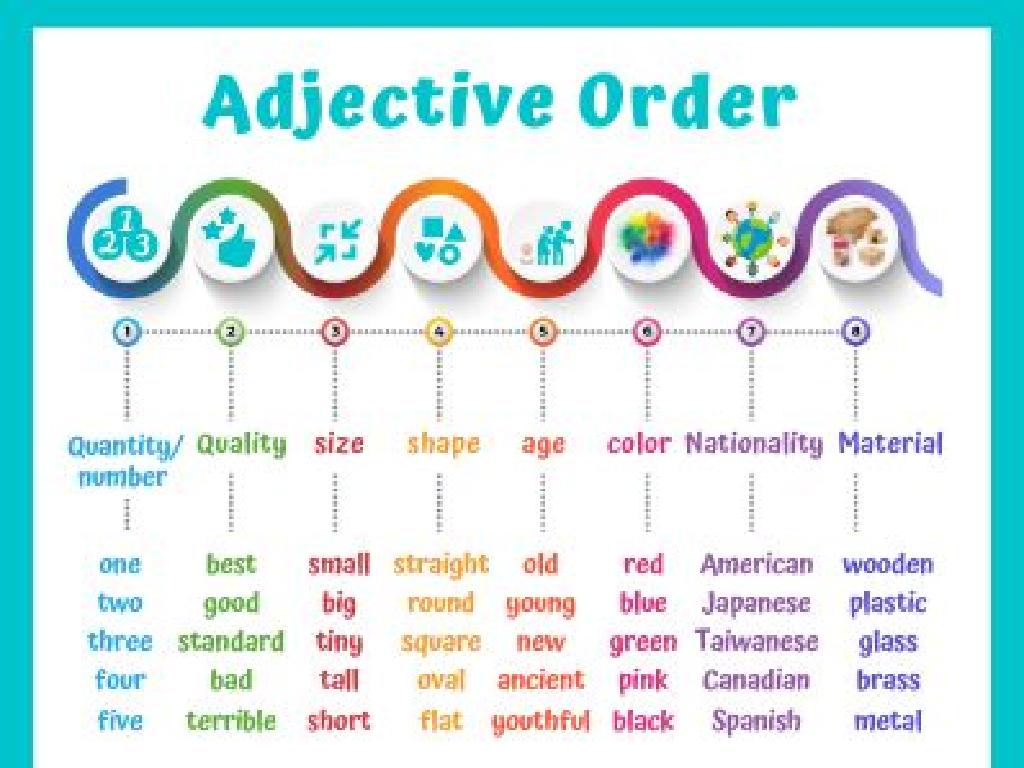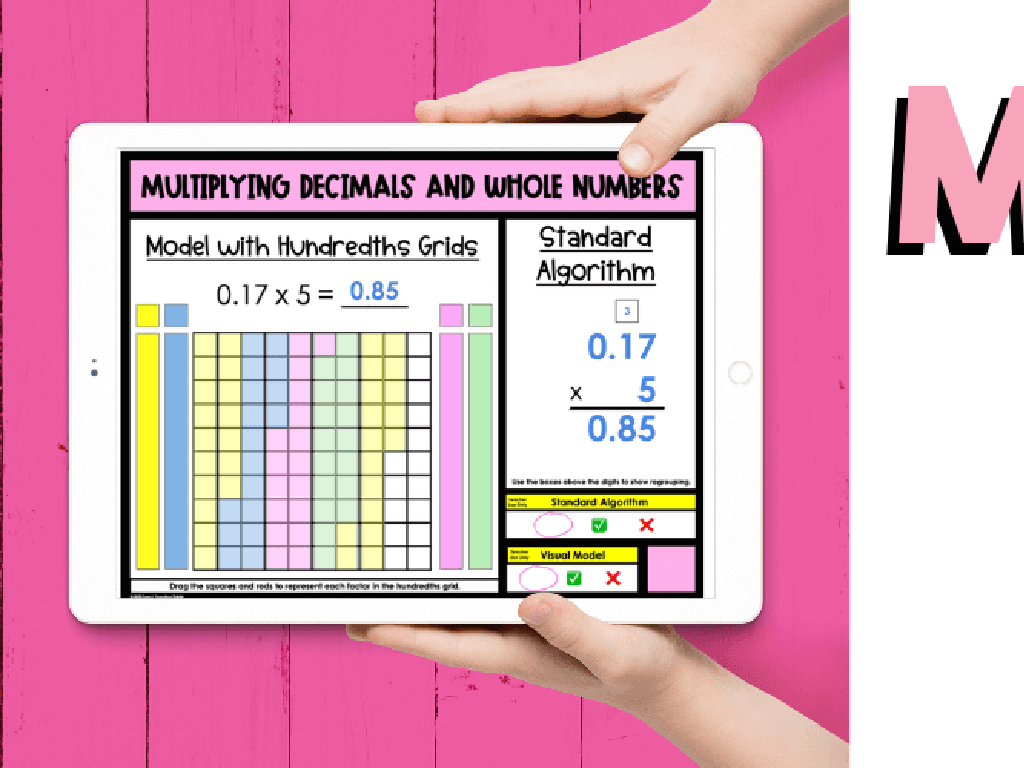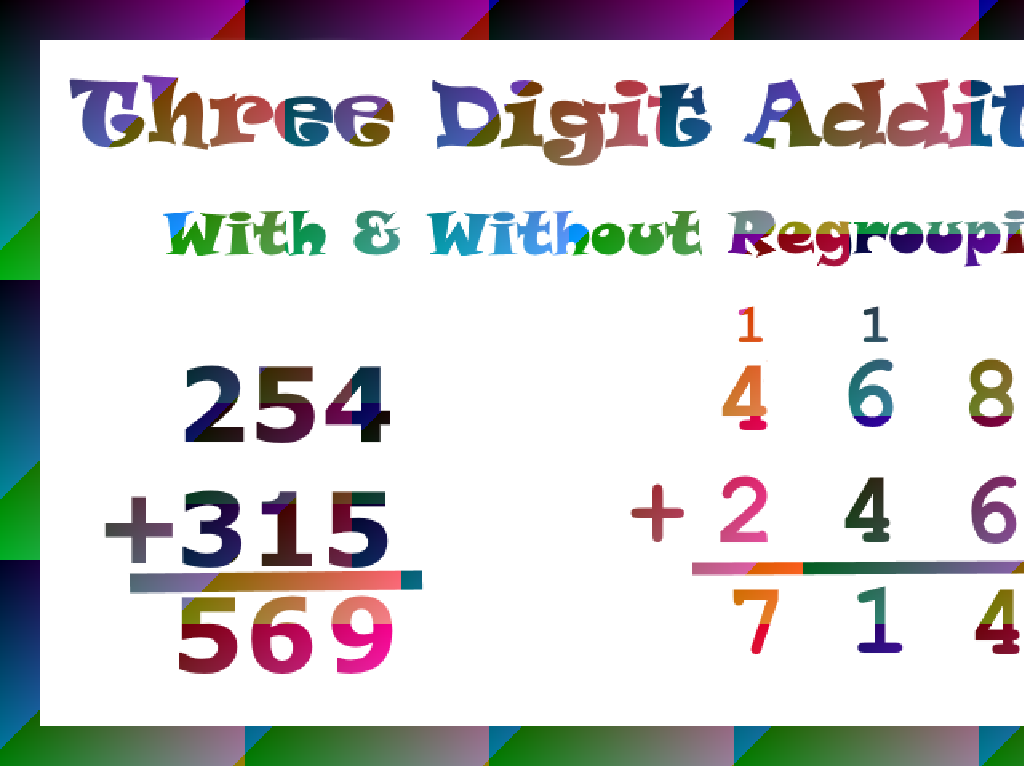Choose Evidence To Support A Claim
Subject: Language arts
Grade: Seventh grade
Topic: Persuasive And Opinion Writing
Please LOG IN to download the presentation. Access is available to registered users only.
View More Content
Introduction to Persuasive Writing
– What is Persuasive Writing?
– Persuasive writing aims to convince readers to accept a viewpoint.
– The strength of arguments
– Strong arguments are supported by credible evidence.
– Choosing evidence for claims
– Evidence must be relevant and directly support your claim.
– Today’s lesson focus
|
This slide introduces students to the concept of persuasive writing, a key component of Language Arts. Persuasive writing is all about presenting arguments that sway the reader to agree with a certain point of view. Emphasize the importance of backing up arguments with strong, credible evidence, as this is what makes a persuasive argument convincing. Today’s lesson will focus on how to select the best evidence to support a claim, teaching students to critically evaluate the relevance and strength of the evidence they choose to use. Encourage students to think about real-life scenarios where they had to convince someone and what evidence they used to support their arguments.
Crafting a Strong Claim in Persuasive Writing
– Define a claim in writing
– A claim states your position on a topic or issue.
– Significance of a strong claim
– A strong claim is crucial for convincing readers and setting the direction of your argument.
– Analyzing claims in opinion texts
– Look at editorials or persuasive essays to see how writers present their claims.
– Crafting your own claim
– Use clear, assertive language to express your viewpoint.
|
This slide introduces the concept of a claim, which is the backbone of persuasive writing. It’s essential for students to understand that a claim is a clear statement of their stance on a particular issue, which they must then support with evidence throughout their writing. Emphasize the importance of a strong, debatable claim that can be argued logically. Provide examples from opinion pieces, such as newspaper editorials, to illustrate how claims function in real-world contexts. Encourage students to practice formulating their own claims on topics of interest, ensuring they are precise and assertive to lay a solid foundation for their arguments.
Types of Evidence in Persuasive Writing
– Facts vs. Opinions: Understand the distinction
– Facts are indisputable truths, opinions are personal beliefs
– Types of evidence: Stats, Quotes, Stories
– Use statistics for numerical proof, quotations for expert opinions, and anecdotes for illustrative stories
– Finding credible evidence sources
– Look for evidence in reputable books, journals, and websites
– Integrating evidence into your argument
|
This slide aims to help students distinguish between different types of evidence and understand their importance in supporting a claim in persuasive writing. Start by explaining the difference between facts (verifiable information) and opinions (personal views). Emphasize the power of statistics, quotations from authorities, and anecdotes in strengthening an argument. Guide students on how to evaluate the credibility of sources, stressing the importance of using reliable information. Teach them how to weave this evidence seamlessly into their writing to make convincing arguments. Encourage critical thinking by having students practice distinguishing between fact and opinion and evaluating the reliability of different sources.
Matching Evidence to Claims
– Relevance of evidence to claim
– Evidence must directly support your claim.
– Assessing evidence strength
– Strong evidence is credible and convincing.
– Balancing evidence types
– Use facts, statistics, and personal stories.
– Crafting persuasive arguments
|
When constructing an argument, it’s crucial to match your evidence to your claim to ensure relevance. Teach students to critically evaluate the strength of their evidence by considering its source, credibility, and how directly it supports their claim. Discuss the importance of balancing different types of evidence, such as factual data, statistics, expert opinions, and anecdotal experiences, to create a well-rounded and persuasive argument. Encourage students to think about how each piece of evidence will be perceived by their audience and to use this to craft the most convincing argument possible. Provide examples of strong versus weak evidence and have students practice this skill by evaluating examples in class.
Evaluating Evidence for Your Claim
– Criteria for strong evidence
– Relevance, sufficiency, and clarity are key for evidence.
– Check evidence for bias
– Bias can distort the truth; seek objective information.
– Assess evidence credibility
– Credible sources are authored by experts and are peer-reviewed.
– Ensure evidence is current
– Outdated evidence may not support current claims effectively.
|
When students are building their arguments, it’s crucial they learn to evaluate their evidence. This slide will guide them through the process of determining the strength of their evidence using specific criteria such as relevance to the claim, sufficiency in supporting the claim, and clarity in its presentation. Students should also learn to check for bias, which can undermine the validity of evidence, and to assess the credibility of the source, favoring those that are well-regarded and authoritative. Lastly, they should ensure that their evidence is up-to-date, reflecting the most current information available, as outdated evidence can weaken their argument. In the next class, we can practice these skills by reviewing examples and assessing the evidence presented in various persuasive texts.
Evaluating Evidence in Persuasive Writing
– Analyze persuasive text examples
– Look at how authors convince readers
– Identify claims and evidence
– What’s the main point? What facts or data support it?
– Discuss evidence effectiveness
– How does the evidence strengthen the argument?
– Understand evidence impact
– Recognize how strong evidence can persuade the audience
|
This slide aims to teach students how to critically analyze persuasive texts by identifying the main claims and the evidence used to support those claims. Students should learn to distinguish between different types of evidence and discuss how effectively the evidence supports the claims. Encourage them to consider the relevance, credibility, and sufficiency of the evidence presented. This will help them understand the impact of strong evidence on the persuasiveness of a text. In class, use examples from familiar texts or media and guide students through the process of evaluating the evidence used by the authors to make their case.
Crafting Your Argument: Choosing the Best Evidence
– Steps to select strong evidence
– Identify claim, gather facts, statistics, anecdotes, and expert opinions.
– Integrating evidence smoothly
– Use transition words, paraphrase or quote, and relate evidence back to the claim.
– Keeping a persuasive tone
– Use emotional appeal, confident language, and address counterarguments.
– Review and refine your argument
|
When crafting an argument, it’s crucial to start by clearly stating your claim and then selecting the most compelling evidence to support it. This evidence can include factual data, statistics, personal anecdotes, or quotes from authorities on the subject. Teach students how to weave this evidence into their writing in a way that feels natural and supports their argument effectively. They should use transition words to introduce evidence, and always tie it back to the main claim. Maintaining a persuasive tone is about convincing the reader of your viewpoint, which can be achieved through emotional appeal, using strong and confident language, and addressing potential counterarguments. Finally, encourage students to constantly review and refine their arguments for clarity and impact.
Class Activity: Evidence Scavenger Hunt
– Understand the given claim
– Find evidence supporting the claim
– Look for facts, statistics, or quotes in articles or books
– Discuss evidence in groups
– Share and debate the validity of your evidence with peers
– Present findings to the class
– Explain how your evidence backs up the claim clearly
|
This interactive class activity is designed to enhance students’ understanding of how to support a claim with appropriate evidence. Students will first be given a claim and will then search for evidence in various texts. They should focus on finding credible sources such as articles, books, or studies that provide facts, statistics, or direct quotes. After gathering evidence, students will work in groups to discuss the relevance and strength of their findings. Each group will select the most convincing evidence to present to the class. Teachers should guide the students on how to present their evidence effectively and how to explain the connection between their evidence and the claim. Possible claims for the activity could include topics on environmental issues, school policies, or current events. The goal is for students to practice critical thinking, collaboration, and persuasive communication skills.
Concluding Evidence in Persuasive Writing
– Recap: Supporting Claims with Evidence
– Review how to strengthen arguments with relevant facts
– Persuasive Writing Skills
– Understanding persuasion is key in writing and critical thinking
– Homework: Craft a Persuasive Paragraph
– Include a clear claim and back it with solid evidence
– Emphasize the Importance of Evidence
– Solid evidence makes your argument convincing
|
As we wrap up today’s lesson, remember that choosing strong, relevant evidence is crucial in supporting your claims. This skill is not only important in writing but also in developing your critical thinking. For homework, apply what you’ve learned by writing a persuasive paragraph. Your paragraph should include a clear claim and use specific evidence to back up your argument. This exercise will help you practice how to convince readers of your viewpoint. Make sure your evidence is directly related to your claim and effectively supports it. We’ll review and discuss your paragraphs in the next class, so be prepared to share and explain your reasoning.



/exploration_maps_history.png)


